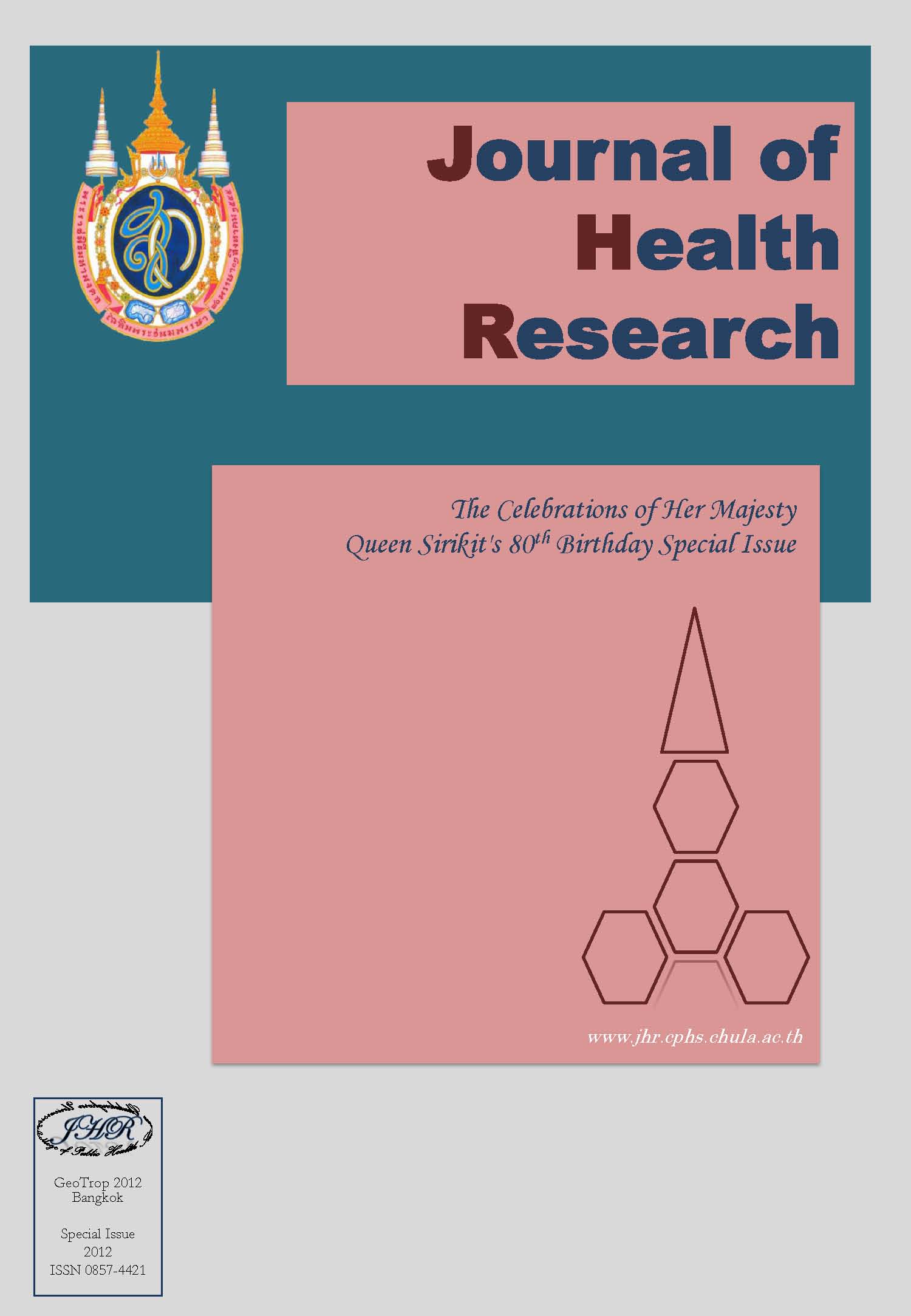Daily Non-External Mortality Effects Of Outdoor Air Pollution 1999-2001, Bangkok, Thailand: Case-Crossover Study
Keywords:
ambient air pollution, non-external mortality, case-crossover, BangkokAbstract
There have been many time series and case-crossover (CCO) studies of short-term ambient air pollution effects on daily mortality and morbidity. To the best of our knowledge, no CCO studies of such effects in Thailand have been published previously. We conducted a CCO study to assess effects of ambient air pollution on non-external (non-accidental) mortality in Bangkok during 1999-2001 (total 3 years). We assessed associations of daily non-external mortality with ambient air pollutant concentrations in Bangkok from 1999 through 2001. Pollutant metrics assessed were 24-hour average particulate matter of diameter ≤10 µm (PM10), nitrogen dioxide (NO2), and sulfur dioxide (SO2), and 8-hour average ozone (O3) from 10:00 AM to 6:00 PM. Data were analyzed with stratified conditional logistic regression. There was one stratum for each of the 102,522 deaths included in analysis. In each stratum, the case day was the day on which a given death occurred. The crossover (control) days were all matched days of week in the same month as the case day (time-stratified analysis). Two-day moving average levels of each pollutant were assessed in separate analyses (single-pollutant models). For each pollutant, unadjusted effects and effects adjusted for same-day average temperature and previous-day average relative humidity, were modeled. Air pollution effects were assessed overall, by year, and by gender. The study revealed that pollutant concentrations were consistently positively associated with mortality from non-external causes. Unadjusted associations were statistically significant (p<0.05) for O3, SO2, and PM10. Adjusted associations were significant for NO2 and PM10. Adjusted pollutant effects were weaker than unadjusted ones for all pollutants but NO2. Associations of air pollution with mortality varied considerably by year, and were generally strongest in 2001. Associations were significantly stronger in females than males. Conclusions, these findings suggest that in Bangkok, daily non-external mortality increases with increasing short-term exposure to ambient air pollution, especially PM10. Findings are qualitatively consistent with those of previous studies of air pollution and daily mortality. Further research is needed to develop optimal strategies for adjusting analytical models for weather, to evaluate the generalizability of these findings across times and across locations in Asia, to advance understanding of observed temporal and gender differences in air pollution effects, and to assess the relative importance of different pollutants (e.g., airborne particulate and gaseous pollutants) in promoting increased mortality.







